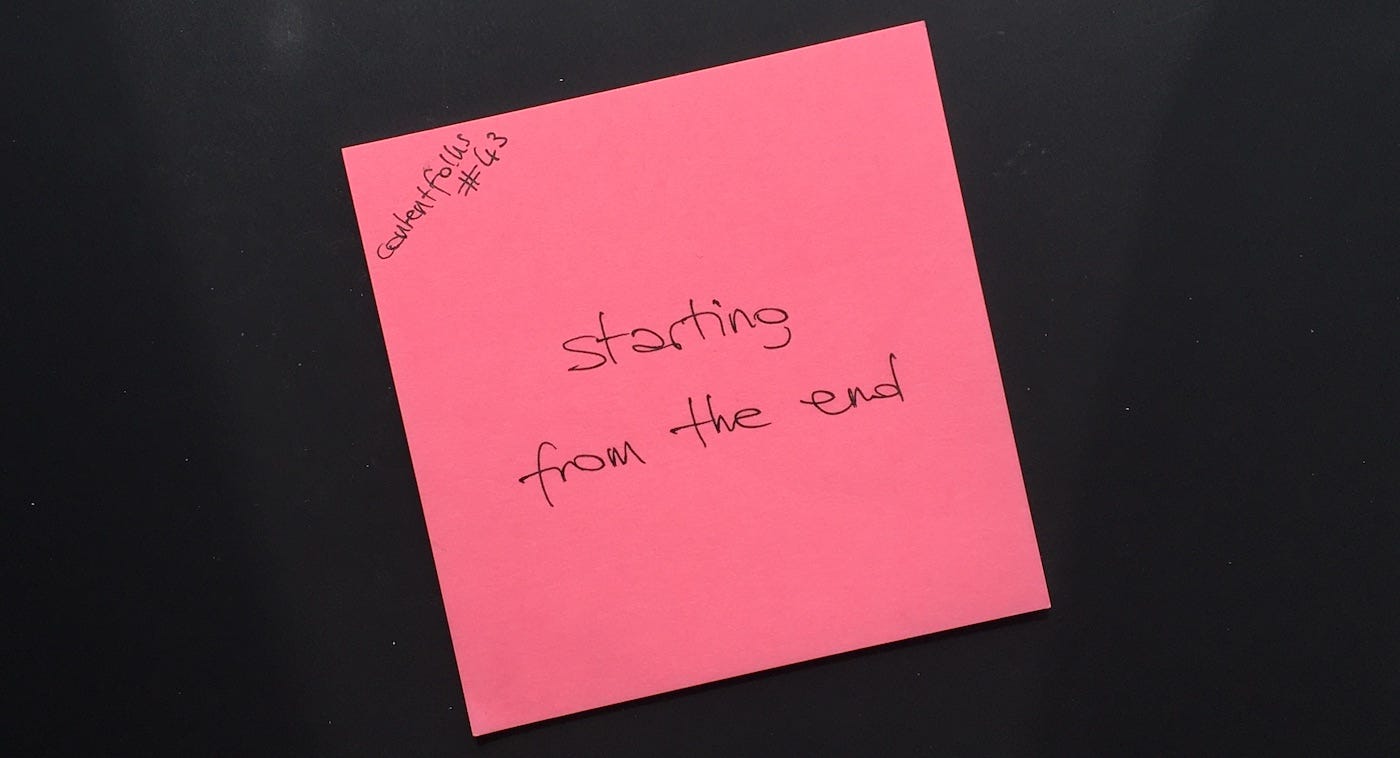cf#43: starting from the end
You are reading contentfolks—a fortnightly blend of sticky notes, big content ideas, and small practical examples. Thank you for being here! ~fio
Hey 👋
It’s quiz time!
Which of these two approaches to planning leads to greater motivation, less time pressure, and better overall results?
Forward planning, aka planning in chronological order from start to finish
Backwards planning, aka planning in reverse chronological order from finish to start
The planning fallacy, and how to avoid it
Humans have a famously hard time making accurate predictions of how future projects will unfold. That’s because of a sneaky cognitive bias we all experience, the planning fallacy, which makes us consistently underestimate the amount of time we’ll need to complete a task.
“Scientists and writers, for example, are notoriously prone to underestimate the time required to complete a project, even when they have considerable experience of past failures to live up to planned schedules.”
…ouch.1
One way to counteract the bias is through backwards or reverse planning, where you start planning from the end and work backwards from there.
For example: say you’re planning a big content project due next month. You can use traditional forward planning and make a list of everything you need to do from now on… or, you can start by considering the very last action you’d need to take (probably clicking ‘publish’ in your CMS) and work backwards to figure out when you’d need to build the page by, when you’d need to have a final draft and visuals ready by, and so on until you’ve listed everything leading up to your deliverable and found yourself back at the start.
The theory is that backwards planning forces you to break your usual patterns of thinking and view a project from an alternative perspective, which in turn helps you build more realistic estimates and consider potential obstacles or barriers you’d otherwise overlook. This approach has been proven to lead to “greater motivation, higher goal expectancy, less time pressure, and better goal-relevant performance”2—which is exactly what you need when running most content marketing projects!
💡 A practical example 💡
Last year, I planned an online event at Wildbit. I built a Miro board with a rectangular block for each week that separated us from the event (the five green blocks you see below), then I started working backwards from the time of the event itself.
I first listed what needed to happen in the 60 minutes before going live, then in the previous 24 hours, and kept working backwards until I had broken down the project into all of its subtasks and planned the entire thing in reverse order.
This is what it looked like (click to see full size):
When you see the board, you don’t notice any difference: the end result looks the same as a traditional forward plan, so all stakeholders can read it from left to right as they normally would.
The Miro format worked well for this project, which didn’t have many moving parts. For more complex deliverables, I might use a different tool—but the backwards principle would remain the same.
Backwards planning is how I’ve been planning the vast majority of my content projects for the last decade—though funnily enough, I didn’t know this approach had an actual name until I sat down to do some research for this issue. Ah, the things one learns 😅
Give it a try and report back,
Check out the 1977 paper where Kahneman & Tversky introduced the concept of planning fallacy. I enjoyed reading it, though I’ll admit they lost me a bit around page 37.
From this (paywalled) paper on the relative effects of forward and backward planning on goal pursuit.





Thanks for sharing this strategy. It seems kinda counterintuitive to start at the end but I can see how it would make you think differently about your projects.
What I tend to do is make an estimate of a job and then add a couple of hours to cover me lol